
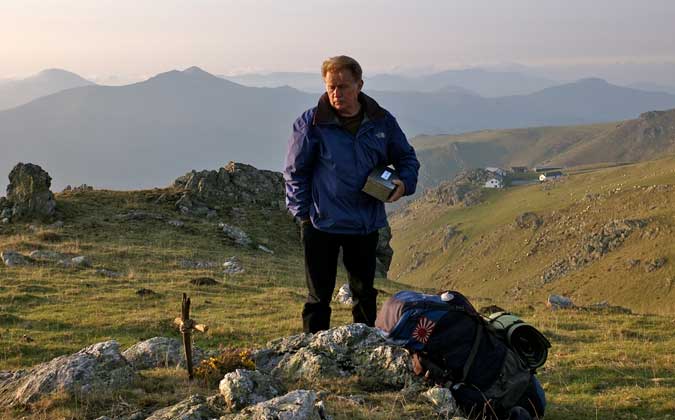
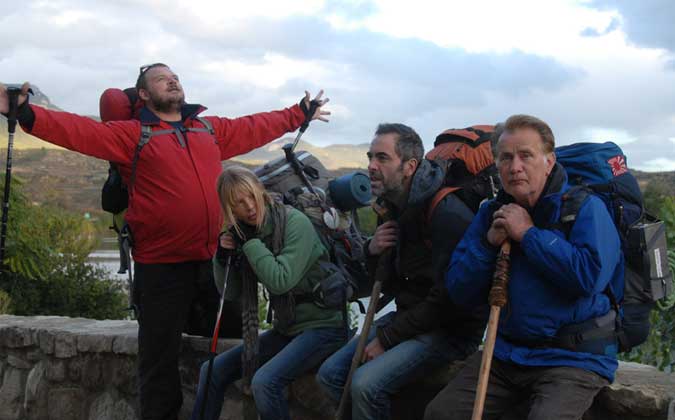
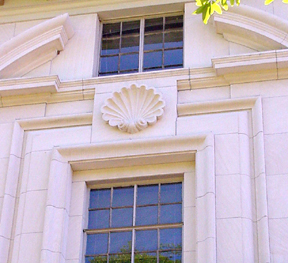
Shells on Parlin Hall (named after founder of Plan II)
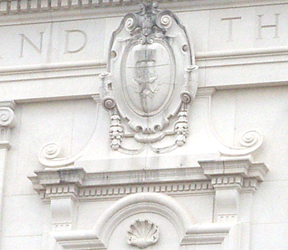
and on the Main Building, under the motto:
"Ye Shall Know the Truth and the Truth Will Set You Free"
Scallop Shells on the U.T. campus
At this point we have found the shells on or in the following buildings: Andrews, Battle, Batts, Benedict , Calhoun, Carothers, Garrison, Hogg, the Littlefield House, Littlefield dorm, the Law School, Moore-Hill, Parlin, Pharmacy, Rainey, Scottish Rite Dormitory, Sutton, the Tower (the Main Building), the state Capitol, University Baptist Church, University Christian Church, and Central Presbyterian Church . Fossil shells have been identified in a West Mall bench and on a Goldsmith wall.
Check site above for pictures.
Extra Credit will be awarded for new digital pictures of other shells on or near campus and brief essays on "My pilgrimage: what the shell represents to me," especially how it relates to MY GOALS and/or to THE GOALS OF THE COURSE. Make sure to identify the building when you contribute pictures of shell symbols. Pictures accepted will include your initials in the file name.
Extra credit is
awarded as follows:
10 for true scallop shell symbol on a building not before
identified with the shell symbol
5 for other shell symbols or for different shell symbols
on buildings already identified with shells
3 for shell fossils in limestone in various places
up to 20 for the essay on one's pilgrimage here at U.T. -- "What
is your goal, your pilgrimage?"
Cedric in Scott's Ivanhoe swears "by the scallop shell of Compostella" (p.280 ch. 27) -- Susan Shaffer
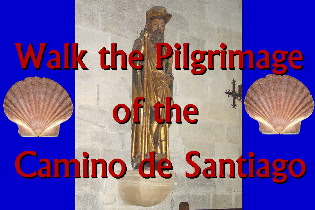
Scallop Shell Symbolism:
Give me my scallop shell of quiet;
My staff of faith to walk upon;
My scrip of joy, immortal diet;
My bottle of salvation;
My gown of glory (hope's true gage)
And then I'll take my pilgrimage.
-
Sir Walter Raleigh
Scallop shell symbolism is associated with the apostle, James. James the Greater was son of Zebedee, a fisherman of Galilee, and brother of John the Evangelist. He was among the circle of men closest to Jesus, being present with Peter and John at the Transfiguration, and again at the Agony in the Garden, where the same three are seen sleeping while Christ prays. A series of legends dating from the Middle Ages tells of his mission to Spain and burial at Compostella, which then became one of the great centers of Christian pilgrimage. It was well-established as a place of pilgrimage by the eleventh century, next in importance to Jerusalem and Rome. In art James appears as three distinct types; one of them is the pilgrim: He wears the pilgrim's broad-brimmed hat and cloak. From his staff or shoulder hangs the wallet or water-gourd of the pilgrim. His special attribute, the scallop shell, appears on his hat or cloak, or on the wallet. To this day, on arrival at the cathedral of Santiago de Compostela, pilgrims present their Pilgrim Passports , duly stamped at each of their halts along the way, at the Cathedral's Pilgrim Office, and apply for the Compostela, the traditional certificate in Latin confirming their completion of the pilgrimage. The origin of the scallop shell as the badge of the pilgrim to Compostella is open to more than one explanation. Found in abundance along northern Spanish beaches, the scallop shell has become closely intertwined with the Camino de Santiago. The shell is carved into the walls and fittings of this parish and adorns the church’s stationary. Practical observers argue that the shell was adopted merely as a device for sipping water from streams along the way. If this is so, it quickly took on greater meaning even to the earliest pilgrims.
The scallop design symbolizes the many European starting points from which medieval pilgrims began their journey, all drawn to a single point at the base of the shell, Santiago de Compostela. Today in Spain cement scallop shell markers along the Camino reassure participants that they have not taken a wrong turn and local residents decorate their gardens and houses with shells in solidarity with the pilgrims. A recent pilgrim recalled that the shells “came in various forms: ceramic shells fitted onto road markers, government-issue traffic signs marked with an abstract shell, shining brass shells embedded in sidewalks. Some were broken, some had been stolen as souvenirs leaving only a trace of their presence, some were beautiful, some so simply sketched as to provide the mere suggestion of a shell. In all their variations, they marked the route for hundreds of miles. They reminded all of us pilgrims that in the midst of a world both beautiful and broken there are signs to help lead us forward, sometimes right under our feet.”
